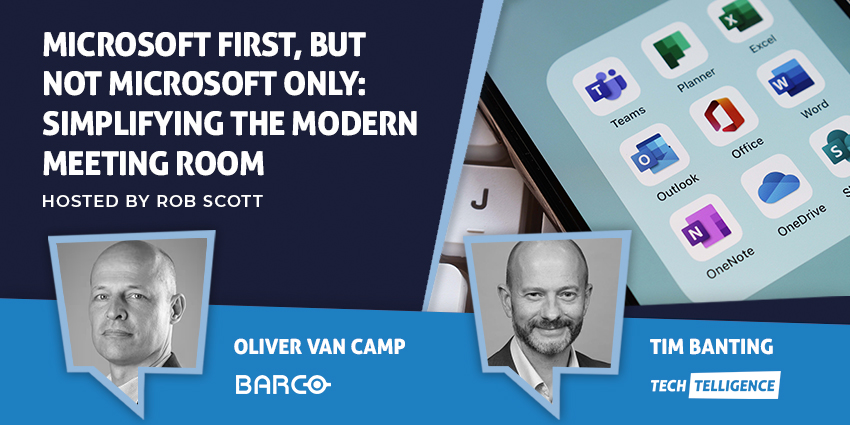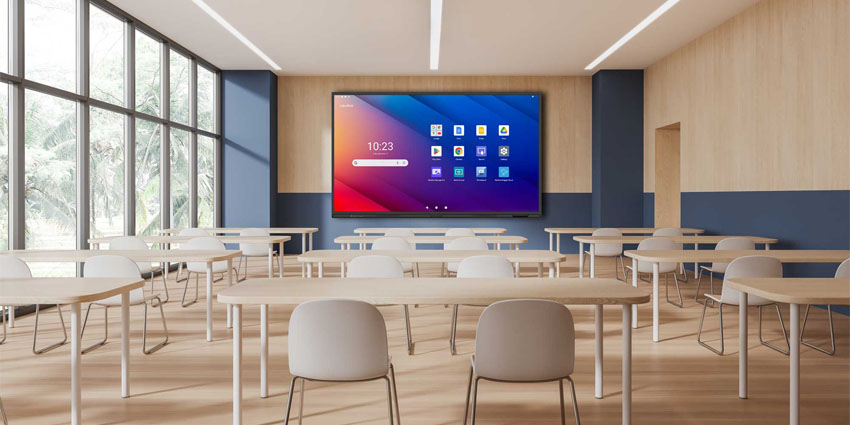Increasingly, we’re starting to see a shift in the communication environment, away from the “plain old telephone” capable of nothing more than the primary audio call, and towards a new experience capable of enabling video, messaging, and true engagement in the workforce. Some companies have even begun to shift away from the desktop endpoint entirely, relying on softphone solutions to access the capabilities they need.
However, Avaya believes that the reign of the desk phone is far from over, and their recent research backs them up, showing that 55% of business communicators in the US still use a desktop device. I caught up with Steve Brock, Corporate Development and Strategy at Avaya to discuss Avaya’s approach to the desktop phone.
Steve came to Avaya with the Nortel acquisition around ten years ago. During his time at Nortel, he led the business and consumer phone portfolio and marketing team and helped with introducing multi-media servers into the marketplace. Now Steve is a part of the “Avaya Desktop Experience” team.
What is the Avaya Desktop Experience?

Avaya calls its desktop solutions their “desktop experience” portfolio because they’re focused heavily on getting the user experience right. Steve told me that what the company is focused on right now, is diversifying the UC environment. “We believe that there’s more to UC than just call control, and we’ve developed a range of devices that will expand the meaning of UC and how it connects to the end-user experience.”
Many of the new Avaya devices support the latest technology like WiFi, Bluetooth, and DECT, and they take into accounts the needs of a changing audience. “We wanted to remind customers why they invest in Avaya in the first place. It’s all about the experience that they expect and enjoy with us.”
Avaya’s devices work on any call control platform, for any size of business, and they provide an experience that’s connected, modern, and personalised. “We want to help our customers improve their conferencing experience, mobilise their workforce, and reduce their ownership costs.” The team for desktop devices is called the “desktop experience team” because they’re focused on delivering more than just the “dumb desk phone” as Steve put it.
What’s Driving the Avaya Desktop Experience?
Avaya has invested a lot of time and energy into researching the needs of the marketplace and creating a desktop solution that fits this new environment. Steve told me that in their recent “State of Desktop” report, Avaya discovered that many consumers have to settle for a less impressive communication experience in their business environment than they would get at home.
“The business world hasn’t caught up with the technology on the iPhone and tools like that. We’re bringing consumer technology into the business desktop in a way that makes sense.”
“We’re making sure that employees can access the full selection of capabilities they need for communication, which improves employee satisfaction and customer experience (CX).”
Through their social media campaigns and trade-in strategies, Avaya also receives a lot of feedback from their audience about the kind of communication experiences they need.
How Do People Communicate in the Office?
Avaya’s “State of Desktop” report allowed them to discover how their audience were communicating in a business environment. Steve told me that the research for this year was on the US market, though they’re planning on looking at EMEA later.
“With this report, we were looking at the current state of the desk phone in the business, as it’s still the primary tool for over half of communicators. The business desk phone isn’t going away. We found that only 10% of the workforce are using a softphone as their only means of communication. What’s more, 8% have access to a softphone but they never use it.”
Additionally, though mobile working is becoming more popular, Avaya still found that 2 out of 3 people still work in the office, and only one out of 10 work at home or in a mobile environment. “When we understand how people are working, we can begin to look at the things that they need to be more productive and efficient.”
What’s the Hierarchy of Needs for Communication?
By examining the state of the desktop phone in the current environment, and the changing needs of a new generation of employees in their study, Avaya was able to uncover something that they call the “hierarchy of needs for communication”. The hierarchy includes things like personalisation, productivity, quality, control, and engagement. Steve told me that the most important thing that their respondents wanted to improve was the “quality” of the technology available to them.
“Really, you have to get that fundamental thing right before you can work on anything else. Once you get the quality down, you can begin to look at the other things in the hierarchy, like personalisation.”
“1 in 3 people say they want a more personalised desktop device, and 42% of our respondents even said that personalisation would help them feel less stressed at the office.”
Ultimately, Avaya’s research shows that people want their desk phone in the office to be more like their personal phone but integrated with the needs of their business. The Avaya Desktop Experience provides that solution, through a transformative range of phones like the Avaya Vantage™ – a modular device that employees can use however they choose.
Going Beyond Call Control
Steve told me that with the Avaya Desktop Experience, Avaya is reaching out to UCaaS service providers to let them know that call control is just the tip of the iceberg in what’s possible with the desktop phone. The Vantage, for instance integrates with UC platforms like Avaya Equinox, and offers the Avaya Vantage Voice Assistant to help people get responses to their queries in a faster, more natural way.
“We’re seeing more opportunities with disruptive technology all the time. For instance, we’re working on automatic language translation, which makes the large screen of the Vantage phone particularly useful.”
Steve noted that he thinks we need to do a lot more research into the state of the desktop phone as it becomes a more comprehensive and feature-rich solution for business. The desktop endpoint is still something that today’s employees rely on heavily to work more efficiently, and complete projects in a more productive manner. While you might be able to unlock some of the same apps on your smartphone as you can on your desk phone, there’s nothing quite like having a dedicated business device that provides the full functionality today’s employees need.
The desktop phone is evolving, and it looks like Avaya is nurturing its growth.







